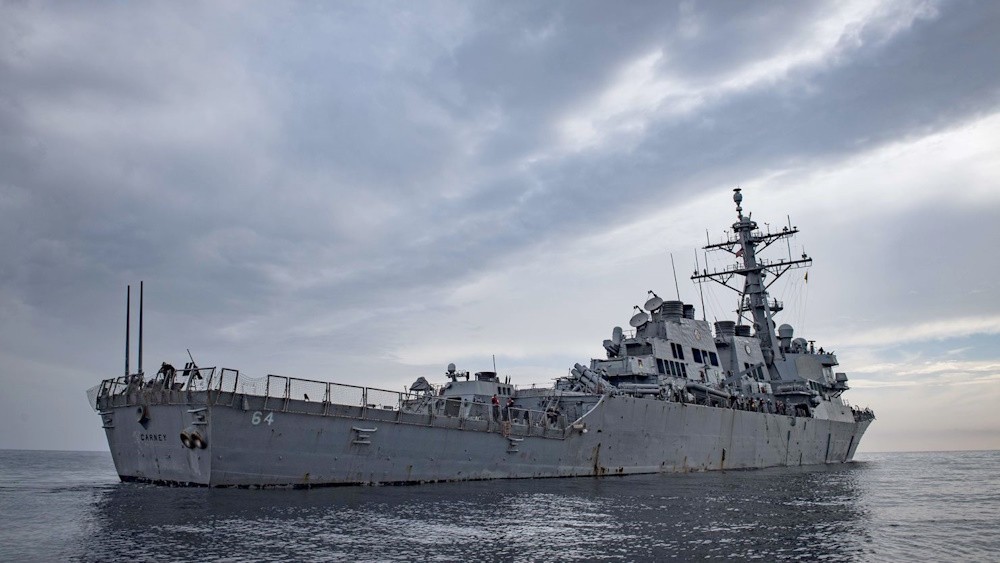Red Sea Attacks on Ships Are Alarming—but Markets Aren’t Panicking

Oil-and-gas prices rose Wednesday after recent rebel attacks in the Red Sea scrambled the shipping industry and prompted the U.S. to send warships into the region to protect a vital trade lane.
But thus far the response of energy markets to the disruption has been muted compared with dramatic moves in prices sparked by some other past outbreaks of violence in the Middle East.
Benchmark Brent crude futures edged up 1.3%, surpassing $80 a barrel for the first time since late November and extending gains over the past week to 8%. Natural-gas futures rose 1.9% in the U.S. to $2.54 per million British thermal units, and 3.8% in northwest Europe to 33.80 euros a megawatt-hour.
Drone and missile attacks on ships by Houthi rebel forces in Yemen—which say they are targeting ships with Israeli links—have led major companies to bypass the Red Sea. The U.S. and allies including the U.K., meanwhile, are preparing to deploy naval vessels to deter further strikes as part of an operation called Prosperity Guardian.
There were no obvious attacks on commercial vessels in the region on Wednesday morning, said Jakob Larsen, head of maritime safety and security at shipping industry group Bimco.
The stretch of water, which connects the Mediterranean Sea and Indian Ocean, is normally a thoroughfare for tankers carrying oil and liquefied natural gas as well as containerships and car carriers. That tanker traffic dipped after the Oct. 7 attacks by Hamas on Israel and has slowed again in recent days after the Houthi threat grew more severe.
Oil and refined-product flows have more than halved from September levels, according to commodities-data firm Kpler. LNG traders and shipbrokers said Wednesday that more tankers carrying the supercooled fuel were diverting to avoid the Red Sea.
That compounds the problem posed by low water levels in the Panama Canal. These had already forced some gas tankers to head from the U.S. to Asia via the Red Sea instead of heading west across the Pacific, said Tom Marzec-Manser, gas analyst at ICIS.
“There is some risk, of course, there is some nervousness,” he said.
One reason for the muted response to the dramatic situation, say traders and analysts, is that crude and gas markets happen to be swimming in surplus supplies, dulling the effect of longer journey times. The U.S., Guyana and Brazil are all pumping record volumes of oil, the International Energy Agency said this month, while Iranian exports of crude have surged this year.
And although more than 8% of the world’s oil supplies have shuttled through the Red Sea on average so far this year, the stretch of water is less of a chokepoint than the Strait of Hormuz to the east. The attacks have clustered around Bab el-Mandeb, at the southern end of the Red Sea.
Analysts at Goldman Sachs said a closure of the strait would lead to longer voyage times for oil tankers, but not a loss of production itself. That is because almost all of the petroleum that sails through the Red Sea can be diverted by other routes. For example, the oil that Saudi Arabia typically exports from its western ports on the Red Sea coast could head via pipeline to the country’s eastern ports.
In gas, Europe and major Asian consumers including Japan are sitting on ample inventories of heating and power generation at the start of winter after stocking up early to avoid a repeat of the shock that hobbled economies in the wake of Russia’s invasion of Ukraine. Traders said the LNG cargoes that have been diverted were mostly either on the ballast leg back from their destination, or on voyages that weren’t drastically extending by sailing around Africa.
One factor giving traders comfort is that they think Houthi forces are unlikely to attack tankers carrying Qatari LNG, which is an important source of fuel in Europe. Another: Regional gas prices currently encourage exporters to send U.S. LNG to Europe instead of Asia, reducing the importance of the Red Sea.
If Asia were to start demanding more U.S. supercooled gas, that could start to drive freight rates for LNG tankers higher, according to Spark Commodities, which tracks gas-tanker rates.
There are vulnerabilities in some corners of the market. One particular pain point is Europe’s supply of jet fuel, said David Wech, chief economist at vessel-tracking firm Vortexa. The continent relies heavily on imports of kerosene from refiners east of the Suez Canal in the Middle East and India.
The disruption is also rippling through metal markets because traders typically ship higher-value metals such as copper, nickel and aluminum on container vessels. Christoph Eibl, chief executive of Swiss metals merchant Tiberius, said a particular concern was that sailing around Africa would add to borrowing costs for traders already contending with a steep rise in interest rates.
“The goods are being financed, and obviously a longer voyage time affects your financing period,” he said.
Some industry executives expect the disruption to be temporary. Shipping companies are likely to return to sailing through Suez in the coming months, said Hugo de Stoop, former chief executive at Euronav, one of the world’s biggest tanker owners.
“It’s just too big an artery,” he said. “I have no doubt a solution will be found.” In the past, for example, shipping companies adapted over time to the risk of piracy by installing barbed wire and high-pressure water pumps.


